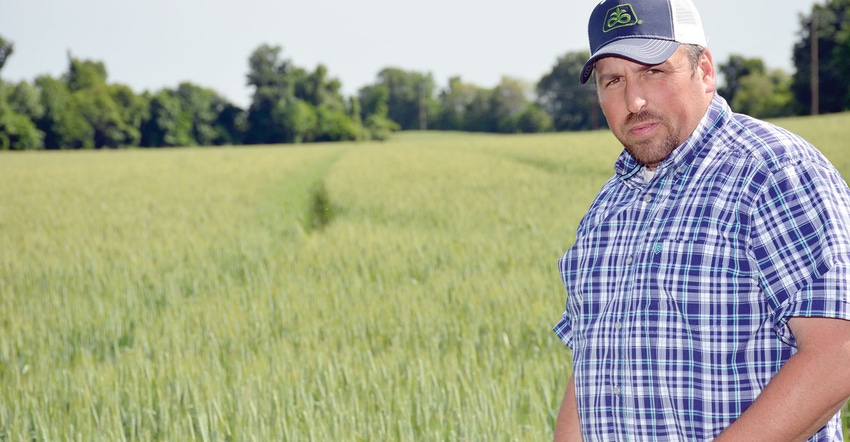
Sometimes introducing technology into a multi-generational farm can be contentious.
“It’s amazing what companies come up with every year to make us more efficient,” says John Verell III, who farms with his father and grandfather in Jackson, Tenn.
Verell, 36, his father, John Verell Jr., and his grandfather, John Verell Sr., raise corn, soybeans and wheat.
Technology plays a big role in in-season management and in maintaining records. And the elder Verell, after an initial bit of uncertainty, embraces it, says his grandson.
“When we first started, Granddad was uncertain of the technology.” They started with fertility and put the GPS monitor in the elder Verell’s truck. “He had me sit in the passenger seat and operate the computer.
“That field made the best yield on less fertilizer. Granddad was sold on variable rate application. He’s all about the numbers.
“My dad has helped us keep up with technology.”
The younger Verell says technology has advanced to the point that he can be in one tractor and see what other tractors are doing in other fields.
“Keeping records is so much easier now. Everything is documented. I can pull up variety information for each field and I am able to write a prescription for seeding rates and fertility across the field. How easy it is to do is amazing.”
He says data from technology help him “keep up with what goes on in the field and to determine what’s profitable and what’s not.
“Decisions are not made on an educated guess. We can see what’s needed on every acre of the farm.”
The Verell operation uses a management program, My Farm, through Tennessee Tractor to aid decisions.
“Robert Marbury, in Alamo, Tenn., works with us and lets us know what new is coming. He can remote into our computer and see what our display is showing and troubleshoot problems. He might find a software issue or some small thing that has gone wrong.”
The younger Verell says variable rate and other technology represent a new wrinkle in changes his grandfather has witnessed and embraced since he was managing an Arkansas farm back in the 1960s. “He’s seen a lot of changes — chemicals he could spray over the top of cotton, boll weevil eradication, then Bt cotton.
“Cotton mechanization was also a big change. My grandmother was picking cotton on the plantation he managed in Arkansas. That’s where he met her.”
The elder Verell’s willingness to embrace new ideas and management techniques keeps the operation on the cutting edge of change. And the numbers should please him.
“Farming with technology is cheaper and more accurate,” the grandson says.
About the Author(s)
You May Also Like






